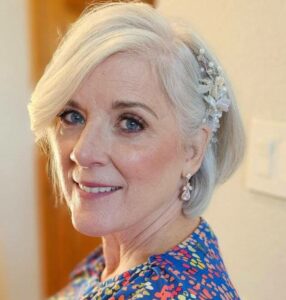Besides the element of Voice, a strong sense of SETTING can give the reader a strong impression that a real person is behind the written word. The reader should be connected to each scene by offering her a place to look around and observe.
While I write this post for my website, World So Bright, I’m stationed in the cleanest most attractive laundromat I’ve ever encountered. The chrome on every machine shines. The doors on the new dryers sparkle. The floor is swept the walls, and walls are painted perfectly. Take a breath, it smells like clean laundry in here. That’s for sure. This establishment is nestled in the small town of Centralia, a marvelous town with both history and heart. Yep, that’s where I am as I write to you.
Your memories are connected to locations. Where were you when you realized your parents were lovers? Or where did you sit and daydream about your future life as an adult? For me, that was on the school bus. I preferred to sit on the right side of the bus next to the window, I could see far across the farmland of Paradise Road, just south of Houghton, Michigan. While the school bus was the setting for daydreams, the kitchen sink was the setting for reviewing my memories. A full sink of dishes was the right amount of time, to remember a scene from my younger motherhood days, and became a valuable activity before I recorded them.
So also, you are likely sitting somewhere as you remember and write the next chapter or scene of your memoir project. Anchoring yourself and your story in real places makes you accessible to your readers. They wash dishes too!
Anchoring your story in a place is as easy as the “front end” of one sentence. Here’s an example,
“I had just come from the market with a week’s worth of croceries, tired and sweaty, when. . .”
Let’s call our setting “anchor” a SETTING TAG.
Think of the power of a Setting Tag. It can establish the mood, the tone, and the emotional level of a moment in time. What we choose to describe should be something important or symbolic at that moment.
SETTING TAG + PERSONS present + DIALOGUE
Here’s an example,
I dragged myself into the house, arms full of groceries. I set down my keys when my husband came up beside me and said softly, “We just got a call from your mother. Donny passed away in the night.”
Note that what was spoken is presented within quote marks.
Certainly, the next element to include will be your immediate reaction. The impact or the effects of what was said may be felt until today.
So now we have: SETTING TAG + PERSONS present + DIALOGUE + REACTION
Let’s take it a step further. Heavily charged situations contain backstory. Personal interactions both negative and positive are rooted in the history of those persons present. Even the location has walls that remember! So, it’s possible the recipe of this scene may include a FLASHBACK.
SETTING TAG + PERSONS present + DIALOGUE + REACTION or FLASHBACK + Transition back to the memoir’s TIMELINE
The question arises “How do we trust that what we remember are the exact words that others or ourselves have spoken?” In the world of creative nonfiction, if the quote would be considered reasonably his or her statement, you may place the quote marks there.
So, what do we have so far? We have a Setting Tag, mention of persons present, quoted dialogue, emotional reaction or impact, flashback history, and the narration that holds it all together.
Adding SETTING TAGS to scenes and memories in your memoir project will ground or anchor the story in real places making your story more believable. They should believe it because it’s true.
Back to Writing Tips
Continue Module 7, Elements of Fiction: tone setting



